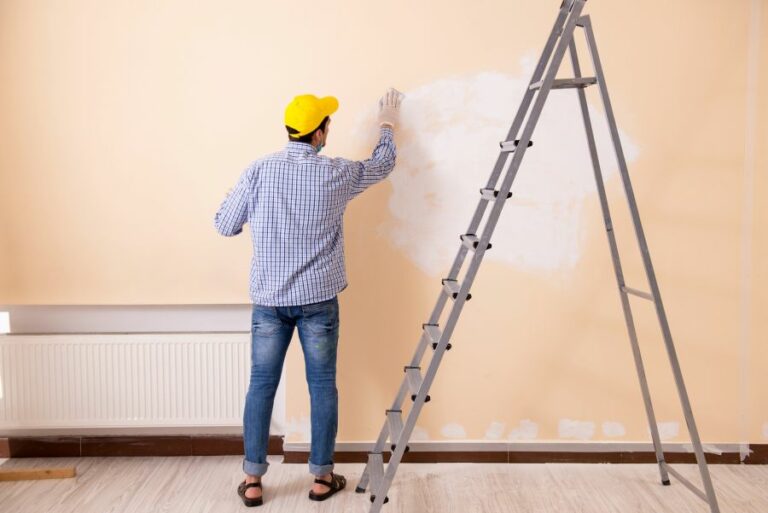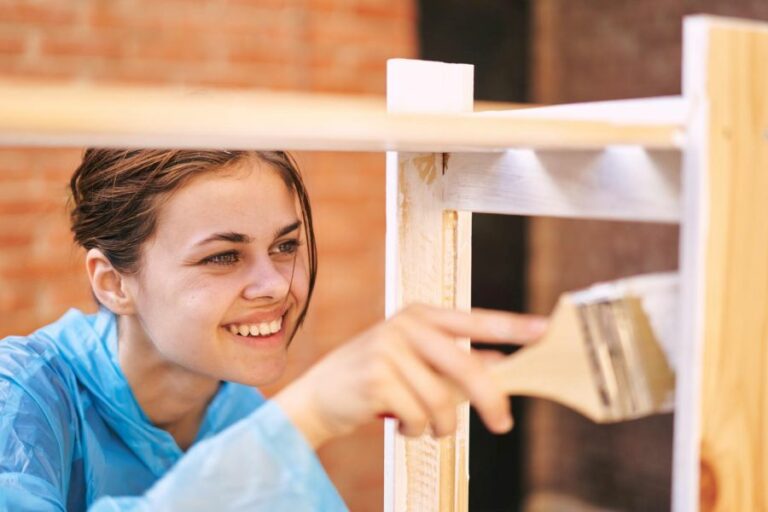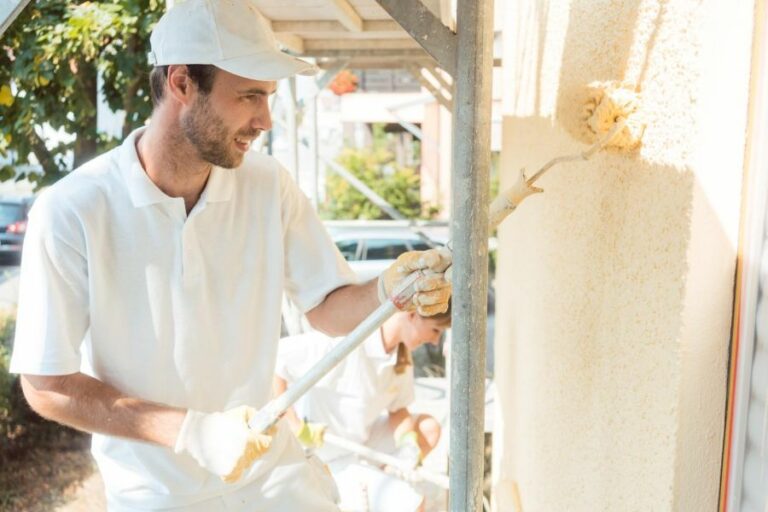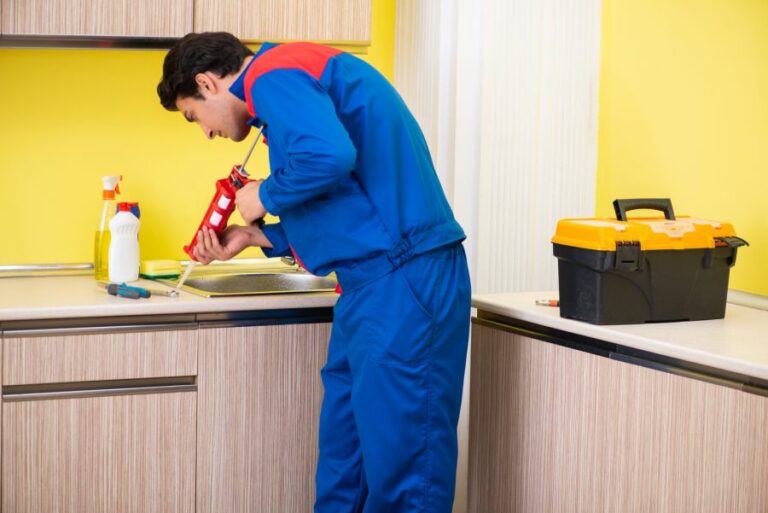De Rust Surfaces And Remove Chipping Paint. What Pros Say
Dealing with rust or chipping paint can be a hassle, but fear not! We have the perfect solution for you to tackle this issue head on. In this discussion, we’ll cover the essential steps and tools needed to effectively remove rust and chipping paint, leaving your surfaces looking fresh and well-maintained. So, let’s dive in and restore your surfaces to their former glory with confidence and ease!
De rust surfaces and remove chipping paint:
Proper surface preparation is crucial for paint adherence and longevity. To de-rust a surface, scrape off loose rust, sand the surface smooth, clean it thoroughly, apply a rust converter if needed, and then prime and paint. For chipping paint removal, scrape off loose paint, sand the surface, clean it, prime, and paint. Always follow safety precautions and EPA guidelines for lead-based paint.

Uncover the secrets to properly addressing de-rust surfaces and removing chipping paint in any project. Delve deeper into the world of surface preparation and restoration. Read on for a step-by-step guide, tips, and more to enhance your skills and ensure flawless results every time.
Contents
- 1 Eliminate Rust and Chipping Paint with Ease
- 2 Effective Paint Chip Removal from Rusty Surfaces
- 3 Does Paint Suffer Damage from Rust Dissolver?
- 4 Techniques for Removing Rust and Old Paint on Metal
- 5 Solutions for Rust Cleaning and Paint Stripping
Eliminate Rust and Chipping Paint with Ease
• The Importance of Proper Surface Preparation
Before delving into the steps to de-rust and remove chipping paint, it’s crucial to understand the importance of proper surface preparation.
If a surface isn’t adequately prepared, the paint or coating applied may not adhere correctly or may deteriorate prematurely, leading to additional time and expenses for maintenance or repair.
Following proper de-rusting and chipping paint removal methods will ensure that surfaces are in the best possible condition to accept new paint or coatings for long-lasting results.
The Environmental Protection Agency has guidelines for safely dealing with lead-based paints, which should be followed when working on older structures.
• Equipment and Safety Precautions
Before beginning the process of de-rusting or removing chipping paint, gather the following necessary tools and safety gear:
- Wire brush, paint scraper, or other suitable tools for scraping off loose paint and rust
- Sandpaper, sanding block, or electric sander for smoothing the surface
- Cleaning supplies (detergent, water, and a sponge or cloth) for washing the surface
- Protective gloves, safety goggles, and masks to protect yourself from potential hazards during the process
- Drop cloths, plastic sheeting, or other materials to protect surrounding areas from dust and debris
Always take safety precautions seriously when working with potentially hazardous materials, such as lead-based paint or rust particles.
• How to De-Rust a Surface
Follow these steps to effectively de-rust a surface:
- Scrape off loose rust: Use a wire brush, paint scraper, or other appropriate tools to scrape off loose rust from the surface. Apply firm pressure to remove as much rust as possible.
- Sand the surface: Once you have removed any loose rust, use sandpaper or an electric sander to smooth the surface further. Start with coarse-grit sandpaper to remove stubborn rust, then switch to finer grits to achieve a smooth finish.
- Clean the surface: After sanding, thoroughly clean the surface with detergent and water, using a sponge or cloth to wash away any remaining rust particles or debris. Rinse the surface with clean water and allow it to dry completely before proceeding to the next step.
- Apply a rust converter: For heavily rusted surfaces or areas where rust is difficult to remove entirely, apply a rust converter according to the manufacturer’s instructions. This product chemically reacts with rust to transform it into a stable compound, preventing further rust from forming.
- Prime and paint: After the rust converter has fully cured, apply a high-quality primer to seal the surface before painting. Once the primer is dry, paint the surface with a rust-inhibiting paint for added protection.
• How to Remove Chipping Paint
Follow these steps to remove chipping paint from a surface effectively:
- Scrape off loose paint: Using a paint scraper or other suitable tools, carefully remove any loose, chipping paint from the surface. Hold the scraper at a slight angle to avoid gouging the underlying material. Be sure to collect and dispose of chipping paint debris properly, especially when dealing with lead-based paint.
- Sand the surface: Thoroughly sand the area where the chipping paint was removed with sandpaper or an electric sander. Start with medium-grit sandpaper to smooth the edges of the remaining paint, and work your way to finer grits for a seamless finish.
- Clean the surface: As with the de-rusting process, clean the surface using detergent and water. Rinse with clean water and allow the surface to dry completely.
- Prime and paint: Apply a high-quality primer to the surface, ensuring even coverage of the area where chipping paint was removed. Once the primer is dry, paint the surface with durable paint to ensure long-lasting results.
• Final Thoughts
De-rusting surfaces and removing chipping paint are essential aspects of proper surface preparation for painting or applying protective coatings. By following the steps outlined above, you will ensure a smooth, durable finish for your project while protecting yourself from potential hazards.
Proper surface preparation is an investment in the longevity of your paintwork or coating, ultimately saving time and money in the long run. Always remain vigilant and adhere to safety protocols to protect yourself and the environment during the process.
Remember to consult the Environmental Protection Agency guidelines when dealing with older structures that may contain lead-based paint.
Effective Paint Chip Removal from Rusty Surfaces
Removing paint chips from rust is an essential task to keep metal surfaces looking clean and well-maintained. Additionally, treating rusted areas promptly can help prevent further rust formation and damage to the metal.
• Identify the Extent of Rust Formation
Before beginning the process of removing paint chips from rust, it is crucial to identify the extent of rust formation on the surface.
To do this, closely examine the area and determine if the rust is superficial or if it has penetrated deeper into the metal. This assessment will help determine which method to use for rust removal.
– Superficial Rust
Superficial rust is characterized by small, localized spots of rust that haven’t penetrated deep into the metal. It is relatively simpler to remove superficial rust and prevent it from spreading further.
– Severe Rust
Severe rust is characterized by widespread and deeper rust formation, potentially affecting the structural integrity of the metal surface. In such cases, more aggressive methods of rust removal may be required to restore the metal surface to its original condition.
• Methods for Removing Paint Chips From Rust
1. Using a Wire Brush
A wire brush can be an effective tool for removing paint chips from rusted surfaces. Start by using the brush to scrub off the loose paint chips and rust flakes. Be cautious not to scrub too forcefully, as this may cause additional damage to the metal surface.
2. Sanding
Sanding is another method for removing paint chips and rust from metal surfaces. There are several types of sandpaper available, ranging from coarse to fine grit.
Begin with coarser grit sandpaper to remove the loose paint and rust, then gradually move towards finer grits to achieve a smooth surface. When sanding, always use safety equipment such as gloves, safety goggles, and a dust mask.
3. Using a Rust Converter
Rust converters are chemical solutions designed to neutralize rust and prevent further corrosion. They work by converting iron oxide (rust) into a more stable and less reactive compound. To use a rust converter, first, remove any loose paint and rust using a wire brush or sandpaper.
Then, apply the rust converter to the remaining rusted surface according to the manufacturer’s instructions. Wait for the recommended cure time before applying a new coat of paint. Rust converters are available at most hardware stores.
4. Scraper or Putty Knife
A scraper or putty knife can be useful in removing paint chips and rust flakes from metal surfaces. Carefully slide the sharp edge of the tool under the paint chip or rust flake and lift it away from the surface.
For more stubborn rust, you may need to combine the scraper with another method, such as sanding or wire brushing.
5. Using an Angle Grinder or Power Sander
For more aggressive rust removal, an angle grinder or power sander may be necessary. These power tools can quickly remove large amounts of paint and rust but should be used with caution to prevent damaging the metal surface.
Safety equipment such as gloves, safety goggles, and a dust mask should always be used.
• Preventing Rust Formation
After removing paint chips and rust from metal surfaces, it’s essential to take preventive measures to minimize the risk of future rust formation. Here are a few recommendations:
- Apply a protective coating: Applying a rust-preventative coating, such as a primer or paint, can help protect metal surfaces from moisture and reduce the likelihood of rust formation.
- Regularly inspect and maintain metal surfaces: Regular inspection and maintenance of metal surfaces can help identify and address any rust formations in their early stages, preventing them from becoming a more significant problem.
- Control humidity and moisture: Since rust forms when metal is exposed to moisture, controlling humidity and moisture around metal surfaces can help prevent rust formation. Ensure adequate ventilation and use dehumidifiers in areas prone to high humidity.
By employing the techniques discussed in this article and taking measures to prevent future rust formation, you can successfully remove paint chips from rust and maintain the integrity and appearance of your metal surfaces.
Step | Description |
|---|---|
1 | Wear safety gloves and goggles to protect yourself from rust and any debris. |
2 | Use a wire brush to gently scrub off any loose rust and paint from the affected area. |
3 | Apply a rust converter on the surface to prevent further rusting. Follow the manufacturer’s instructions on the application process and drying time. |
4 | Once the rust converter is dry, use sandpaper (120-150 grit) to smoothen the surface and remove any remaining paint chips. |
5 | Clean the surface with a damp cloth to remove dust and debris. |
6 | Apply a coat of primer that is compatible with your paint type. Allow it to dry according to the manufacturer’s instructions. |
7 | After the primer is dry, apply the paint according to the manufacturer’s instructions. Make sure the color of the paint matches the surrounding area. |
8 | Allow the paint to dry completely before using the object or exposing it to any moisture. |
Does Paint Suffer Damage from Rust Dissolver?
Rust dissolvers are chemical solutions designed to remove rust from various surfaces, primarily metal. One common concern among users is whether rust dissolver can damage the paint.
• Understanding Rust Dissolvers
Rust dissolvers, also known as rust removers, come in various formulations, but their primary goal is the same – to remove rust from surfaces.
Most rust dissolvers contain acids or chelating agents that bond with rust and break it down to make it easier to remove. The most common types of rust removers are:
- Phosphoric acid-based: These rust dissolvers contain phosphoric acid, which reacts with rust to form a water-soluble compound. They are commonly used to treat rusted metal surfaces.
- Chelating agent-based: These formulations contain chelating agents that bind with rust and break it down. Examples of chelating agents used in rust dissolvers are citric acid and oxalic acid.
• Potential Damage to Paint
The primary concern when using rust dissolvers is the potential damage to paint during the rust removal process. Some formulations are more aggressive than others and may cause harm to painted surfaces. Here’s what you need to know:
– Phosphoric acid-based removers
Phosphoric acid-based rust dissolvers have the potential to damage the paint. Acidic solutions can cause paint to soften, blister, or become discolored. However, they are typically safer to use on paint than other types of rust removers, as the reaction between the acid and rust is slow and controlled.
– Chelating agent-based removers
Chelating agent-based rust dissolvers are known to be less aggressive and gentler on painted surfaces. While they can still cause some damage to the paint, it is usually less severe than what can happen with other types of rust removers.
• Proper Application to Protect Paint
To minimize the risk of paint damage when using rust dissolvers, follow these recommendations:
- Test a small area first: Before applying the rust dissolver to a large painted surface, test it on a small, inconspicuous area to determine how the paint reacts to the product.
- Apply selectively: When using a rust dissolver on a painted surface, try to apply it as selectively as possible, focusing on the rusted areas and avoiding unnecessary contact with the painted areas.
- Use a paint-safe rust dissolver: Opt for a rust dissolver that is specifically designed to be safe on paint. These products typically contain milder acids or chelating agents that are less likely to damage paint.
- Rinse thoroughly: After applying the rust dissolver, rinse the treated area thoroughly with water to remove any residue and minimize potential damage to the paint.
- Repaint if necessary: If the paint is damaged during the rust removal process, be prepared to repaint the affected area to restore its appearance.
• Alternatives to Chemical Rust Dissolvers
In some cases, you may prefer to avoid using chemical rust dissolvers altogether, opting instead for alternative rust removal methods.
Mechanical methods, such as sanding or using a wire brush, can be effective at removing rust without risking damage to the paint. Another option is to use a non-toxic rust converter, which turns rust into a stable, paintable surface.
For more in-depth information on rust and how to prevent it, visit the National Association of Corrosion Engineers (NACE) website.
• Final Recommendations
When it comes to rust dissolvers and paint, there is always a risk of damage. However, by using a paint-safe product, applying it selectively, and rinsing thoroughly, you can minimize this risk.
As always, it’s essential to test the product on a small area first to determine how the paint will react. It’s better to be safe than sorry when preserving the appearance of your painted surfaces.
Techniques for Removing Rust and Old Paint on Metal
A fresh coat of paint can do wonders to bring new life to old, rusty metal objects. However, simply applying paint over the rust and old paint may not be the best solution.
To achieve long-lasting results and ensure proper surface adhesion, it’s essential to remove the rust and old paint before repainting your metal items.
• Identifying the Level of Rust and Paint Damage
Before diving into the cleaning process, it’s essential to assess the extent of the rust and paint damage on the metal surface. This will help you decide on the most effective removal methods and products to use.
– Minor Rust and Paint Damage
If the metal surface has only small patches of rust and flaking paint, you can use simple hand tools or chemical removers to clean the surface effectively.
– Moderate to Severe Rust and Paint Damage
If the metal surface exhibits significant rust and paint damage, more aggressive removal methods, such as abrasive blasting or power tools, may be required.
• Protective Measures and Precautions
Working with rust and old paint can potentially release harmful particles or chemicals, so it’s crucial to take the necessary precautions. Here are some recommendations to ensure a safe working environment:
- Wear protective gear, such as gloves, goggles, and a dust mask or respirator
- Work in a well-ventilated area or outdoors, if possible
- Use drop cloths or plastic sheeting to protect surrounding surfaces and make cleanup easier
• Hand Tools and Manual Removal Techniques
For minor rust and paint removal, basic hand tools can be highly effective. Here’s a quick guide on how to use these tools properly.
– Wire Brush
A wire brush is an excellent tool for removing loose rust and paint from metal surfaces. Simply scrub the surface vigorously to dislodge the rust and paint flakes.
– Sandpaper or Sanding Block
To smooth out rough surfaces left by the wire brush, use medium-grit sandpaper or a sanding block to eliminate any remaining rust and old paint from the metal. If necessary, repeat the process with finer-grit sandpaper to achieve a smoother finish.
– Steel Wool
For small crevices and difficult-to-reach areas, steel wool can effectively remove rust and smooth the surface. Just remember to work patiently and be thorough when using this method.
• Chemical Rust and Paint Removers
In some cases, chemical rust and paint removers can provide an efficient solution for cleaning metal surfaces. These products are available in various forms, including liquid, gel, and aerosol, and can dissolve rust and old paint effectively without the need for heavy scrubbing.
It’s essential to follow the manufacturer’s instructions when using chemical removers. Typically, these products require applying the remover to the rusted area, letting it sit for a specific duration, and then wiping or scraping away the rust and paint residue.
The Environmental Protection Agency recommends using water-based or low-VOC chemical removers to minimize environmental impact and health risks.
• Power Tools and Abrasive Blasting Techniques
For moderate to severe rust and paint removal, power tools and abrasive blasting technologies can be highly efficient.
– Angle Grinder
An angle grinder equipped with a wire cup or wire wheel can quickly remove large areas of rust and old paint from metal surfaces. It is important to work carefully and maintain control of the tool to avoid damaging the metal surface.
– Rotary Tools
Rotary tools with wire brush attachments can effectively remove rust and old paint from more intricate metal items. These versatile tools are perfect for targeting small, hard-to-reach areas.
– Abrasive Blasting
Abrasive blasting, such as sandblasting or soda blasting, can be an effective method for removing stubborn rust and paint from metal surfaces quickly. This process involves shooting abrasive particles against the metal surface under high pressure.
Abrasive blasting requires specialized equipment and careful execution, so it’s best to consult a professional service provider or thoroughly research the process beforehand.
• Final Surface Preparation
Before you apply primer and paint, it’s vital to ensure your metal surface is appropriately prepped.
– Cleaning the Metal Surface
Use a degreasing cleaner to remove any residual dirt, grease, and dust from the metal surface. Following this, rinse the surface with clean water and allow it to dry completely.
– Applying a Rust-Inhibiting Primer
Once the metal surface is clean and dry, apply a rust-inhibiting primer to provide a proper base for your paint. A primer inhibits rust growth, promotes proper paint adhesion, and helps prevent future paint chipping and peeling.
• Conclusion
Removing rust and old paint from metal surfaces is a crucial step in extending the life and appearance of your metal items. By utilizing the appropriate tools and techniques, you can effectively restore your metal objects, ensuring a professional finish and many years of enjoyment.
Step | Description |
|---|---|
1 | Wear proper safety gear like gloves, goggles, and a mask. |
2 | Use a wire brush, sandpaper, or abrasive sponge to scrape off loose paint and rust. |
3 | Apply a rust converter or remover to the metal surface according to the manufacturer’s instructions. |
4 | Use an electric sander with a suitable sanding disc to remove stubborn paint and rust. |
5 | For small, intricate areas, use a rotary tool with a sanding or grinding attachment. |
6 | Wipe the metal surface with a clean cloth dampened with mineral spirits to remove any residue. |
7 | Prime the metal surface with a rust-inhibiting primer and allow it to dry. |
8 | Apply a coat of paint designed for metal surfaces and allow it to dry completely. |
9 | Apply a second coat if necessary and allow it to dry before reassembling or using the metal object. |
Solutions for Rust Cleaning and Paint Stripping
Rust and paint removal are essential tasks for various applications, from home renovation projects to industrial maintenance. Selecting the right tools and cleaning methods is crucial for achieving successful results.
• Chemical Methods
– Rust Removers
Chemical rust removers are specifically formulated liquids designed to break down and dissolve rust. Most of these products are non-toxic and environmentally friendly, making them ideal for use on metals and other surfaces.
Examples of popular rust removers include Evapo-Rust, Naval Jelly, and Rust-Oleum Rust Dissolver. When using a chemical rust remover, always follow the manufacturer’s instructions for the best results.
– Paint Strippers
Paint strippers are chemical solutions used to soften and dissolve paint, making it easier to remove from various surfaces. There are different types of paint strippers, including solvent-based, caustic, and bio-based formulations.
Some common examples of paint strippers are Citristrip, Smart Strip, and Klean-Strip. To use a paint stripper, apply the product to the surface, wait for the prescribed time, and then scrape away the loosened paint.
Always use proper safety gear, such as gloves and goggles, when handling paint strippers.
• Mechanical Methods
– Wire Brushes and Abrasive Pads
Manual rust and paint removal are possible through the use of wire brushes and abrasive pads. These tools work by mechanically scraping away the paint or rust from the surface. Effective manual cleaning can be labor-intensive and time-consuming.
However, it can be useful for small-scale projects or tight spots where other methods may be impractical. When using wire brushes or abrasive pads, apply steady pressure while moving in a consistent pattern.
– Sanding
Sanding is a standard method for removing paint and surface rust from wood, metal, or fiberglass. Sandpaper, sanding sponges, and electric sanders are commonly used tools.
The appropriate grit should be used depending on the material and desired finish, starting with a coarse grit (e.g., 60) for rapid removal and moving to finer grits (e.g., 220) for a smoother surface. When sanding, always wear proper safety gear, such as goggles and a dust mask.
– Grinding and Polishing
Grinding and polishing tools, such as angle grinders and die grinders, are ideal for removing heavy rust and paint from larger surfaces. These tools work by using abrasive discs or wheels that spin at high speeds to grind away the affected areas.
Grinding and polishing require expertise, as too much pressure or prolonged contact can cause damage to the material. Always make sure to use the appropriate disc or wheel for the material being worked on and follow the manufacturer’s recommendations for operating speeds and safety precautions.
• Advanced Cleaning Methods
– Soda Blasting
Soda blasting is a non-destructive cleaning method that uses sodium bicarbonate (baking soda) as an abrasive. This method is milder than other abrasive blasting techniques, making it suitable for delicate surfaces like glass or chrome.
Soda blasting effectively removes rust and paint from various materials while also being environmentally friendly. For soda blasting, a soda blaster is required, which can be rented or purchased. Always use appropriate safety gear, such as goggles and a respirator, when soda blasting.
– Sandblasting
Sandblasting, alternatively known as abrasive blasting, is a powerful and efficient method of removing rust and paint from surfaces. It involves propelling abrasive materials (e.g., sand, glass beads, or plastic pellets) at high speeds against the surface to be cleaned.
Sandblasting requires specialized equipment, so it is often recommended for larger commercial or industrial applications. Always adhere to proper safety procedures, including wearing adequate protective gear, such as a respirator and protective clothing, when sandblasting.
– Laser Cleaning
Laser cleaning, an advanced method for rust and paint removal, uses high-powered lasers to ablate contaminants from surfaces. This non-contact method provides precise cleaning, protects the substrate, and generates minimal waste.
Laser cleaning is suitable for various materials, including metal, glass, and stone. However, due to the high cost of laser cleaning systems, this method is primarily used for industrial applications or specialized restoration projects.
Regardless of the chosen method, always follow manufacturer guidelines, remain patient, and prioritize safety when attempting any rust or paint removal project.







